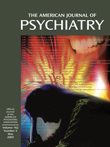Anticonvulsant Hypersensitivity Syndrome From Addition of Lamotrigine to Divalproex
Ms. A, a 50-year-old woman with bipolar depression who was admitted for worsening depression was taking 0.05 mg/day of clonidine, 1000 mg/day of divalproex, 450 mg/day of lithium, 50 mg of trazodone at bedtime, 150 mg b.i.d. of bupropion, 0.5 mg/day of clonazepam, and lamotrigine, which was started 2 weeks before at 25 mg/day, and was recently increased to twice daily. A baseline lithium level was not available.Three days after admission, Ms. A developed a fever of 101°F, nausea, mild headache, and loose stools, and 2 days later, she had a generalized fine macular rash. A CBC, blood chemistries, a urinalysis and stool studies, a chest X-ray, computerized tomographies of her sinuses, and plain abdominal films were all normal. She developed pancytopenia with a WBC count of 5,500 with 16% segs, 43% bands, platelets of 81,000, mild eosinophilia at 5%, and an elevation of her alanine transaminase level at 186 units/liter (normal range=0–36) and her aspartate transaminase level at 82 units/liter (normal range=0–33) and normal alkaline phosphatase and bilirubin levels. Lamotrigine was discontinued when the rash developed, and divalproex was discontinued 2 days later. The rash began to decrease; the fever remitted; the headache, loose stools, and pancytopenia resolved; and the aspartate transaminase and alanine transaminase levels decreased. A lithium level obtained during hospitalization was subtherapeutic at 0.3 mmol/liter (therapeutic range=0.6–1.2 mmol/liter). The lithium dose was increased, and Ms. A was given hydroxyzine for anxiety resulting in effective control of her symptoms.
References
Information & Authors
Information
Published In
History
Authors
Metrics & Citations
Metrics
Citations
Export Citations
If you have the appropriate software installed, you can download article citation data to the citation manager of your choice. Simply select your manager software from the list below and click Download.
For more information or tips please see 'Downloading to a citation manager' in the Help menu.
View Options
View options
PDF/EPUB
View PDF/EPUBGet Access
Login options
Already a subscriber? Access your subscription through your login credentials or your institution for full access to this article.
Personal login Institutional Login Open Athens loginNot a subscriber?
PsychiatryOnline subscription options offer access to the DSM-5-TR® library, books, journals, CME, and patient resources. This all-in-one virtual library provides psychiatrists and mental health professionals with key resources for diagnosis, treatment, research, and professional development.
Need more help? PsychiatryOnline Customer Service may be reached by emailing [email protected] or by calling 800-368-5777 (in the U.S.) or 703-907-7322 (outside the U.S.).

